| Lista Light |  |
St Lucia
The last few months have been packed with the two royal ‘B’s, Birds and Boats, hence, the lack of any chat of, ‘where-to?’ and ‘what-fors?’
So finally, sitting in the oven that is our saloon, I shall attempt to fill you in....
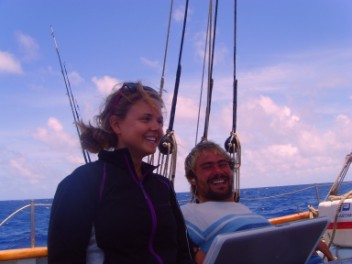
We sailed thought the night with Marcus (our singing Swede) through a whispering blackness, finally halting at the coast of Martinique on my birthday, 11th April, to a reception of Barn Swallows who laced the shrouds and sung us salutations. We deposited Marcus onto the shore in the early morning. He had set sail from Sweden in 2008, aged 25 and crossed the Atlantic with his mate, in his 24 ‘odd’ foot boat, Dory. He had dined aboard Lista with Clare our crew mate in Caruna, when Dave and I were banqueting at my sister’s wedding and Dave’s cousin’s. So it was with vague symmetry, that we wished him well on his way back to Sweden and the start of new adventures 4000 miles further on.
But after leaving Antigua and Barbuda, the first true landfall was St Lucia.......
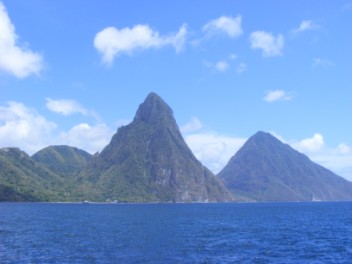
And with it came a parrot, not any old shoulder perching parrot, but the real McCoy, well actually the real Amazonia versicolor the endangered St Lucia Parrot. Megan, Dave and I will never forget it and so, St Lucia will forever be synonymous with rainforest and parrots.
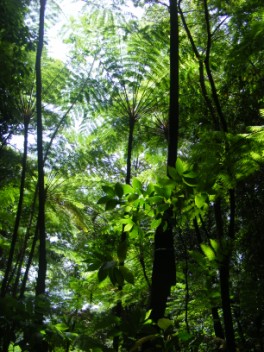
As the sun was rising and the cockerels were well into their sixth and seventh requiems, we paddled ashore and clambered up the beach and onto a track. Immediately we bumped into two glossy little Green Herons Butorides virescens skulking in puddles that were steaming after the night’s rain. Rounding the hill we walked down into Soufriere, passing pigs snuffling on the beach, roosters, line upon line of rainbow coloured washing billowing above the pavement, dilapidated shacks, people stretching and yawning. We found the bus stop and waited until finally a van arrived and we shot up into the hills, to be ejected at the end of the road, where the bus reversed and roared off to collect other flotsam and jetsam loitering at the side of the road...
Sorry, just a quick aside, on the subjects of buses in the Caribbean. They work! Individuals, generally cool guys with a predilection for pounding tunes (in fact that encompasses most of the Caribbean public) dart up and down the roads of the Caribbean swiping vagrants from the side of the road and jamming them to their destination. The buses are converted vans, with perhaps 10-11 seats, but more can squish in or land on top of you. They are fast and furious, but the main lessons that us Brits should learn , is that they are regular you never find yourself waiting for a bus, where ever you are in the countryside or town they are always running. The thought of sitting for most of the morning on a forlorn bench on Dartmoor for a girt coach that passes twice a day if you’re lucky puts the best of travellers off, this way, cars are pretty much redundant.
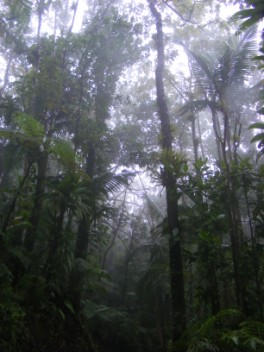
Back to the rainforest, Megan, Dave and I walked up the road that turned into a track through thick secondary rainforest, interspersed with crop patches. True to its name, fat drops of rain soon started to fall, before long we were completely deluged and cowering under huge umbrella leaves. A guy with a ‘panga’ (machete) joined us and we sat watching torrents of rain descending. Pangas are ubiquitous in the Caribbean, one lady whom we met in Montserrat commented that there were few places in the world where she would feel safe picking up a guy wondering down the road wielding a machete and offer to give him a lift! They are superb implements and as far as I can see are deployed in just about every situation whether cutting vegetation, weeding crops, digging holes, slashing open coconuts or cutting your neighbour’s ear off.....
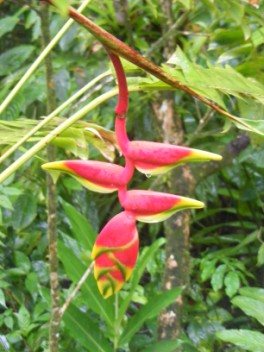
The rain never really stopped so the three drowned rats kept descending up the hillside until we found the entrance to the forest. We then wondered down paths and tracks through humming rainforest, with huge tree ferns wavering above us and wisps of mist uncoiling in the luscious vegetation. Heliconia caribaea (Bird of paradise) type plants hung their gargantuan blooms, collecting water and debris like buckets and consequently stinking to high noon. Antillean Crested Hummingbirds Orthorhyncus cristatus and Purple-throated Caribs Eulampis jugularis sipped nectar with their wings buzzing at full throttle in a clearing on a ridge, while a Broad-winged Hawk Buteo platypterus (that looked just like a mini version of our Common Buzzard Buteo buteo and cousin to Elstone Buteo jamaicensis.
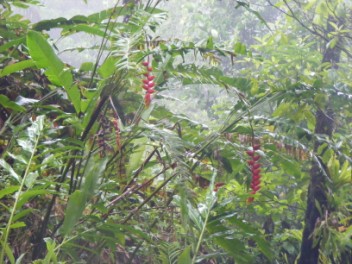
We had quite a few visitors, peering at us through the vegetation; a Mangrove Cuckoo Coccyzus erythropthalmus clambering in the tree tops and lots of little Lesser Antillean Bullfinches Loxigilla noctis hopping from branch to branch. Then in a small clearing we spotted a Robin sized bird. Gradually, it grew bolder and came closer and closer, almost stretching to grab some mango from Megan’s hand, before retreating. The friendly wee chap turned out to be a Lesser Antillean Flycatcher Myiarchus oberi. Meanwhile we were providing the local English take-away to the resident mosi fraternity.
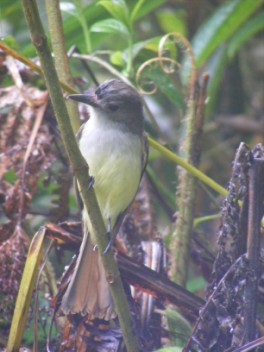
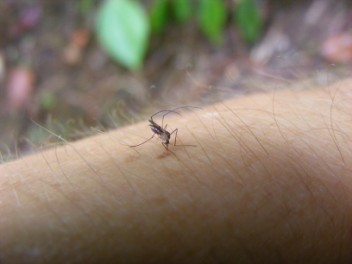
We stood for ages with our Flycatcher. All sorts of creatures started to reveal themselves from within the undergrowth, including the most haunting whistles. We peered into trees to work out what on earth was making these celestial notes, a frog perhaps, an Oriole? The St Lucia Oriole Icterus laudabilis a striking black and yellow Blackbird Turdus merula sized bird, like many of the Orioles in the Caribbean is endemic to one island and is declining due to habitat loss (same old story). Also due to the spraying of pesticides which reduce their prey and the spread of the parasitic Shiny Cowbird Molothrus bonariensis which acts like our Common Cuckoo Cuculus canorus, laying its eggs in other birds’ nests. We have the Golden Oriole Oriolus oriolus, a rare summer migrant to the East of England where it can be found breeding in commercial poplar plantations. The male is golden and black and sings the most stunning fluting sound. But, after all of this chat, we have finally traced down the song of the St Lucia Oriole and it wasn’t our songster at all... So the search goes on.
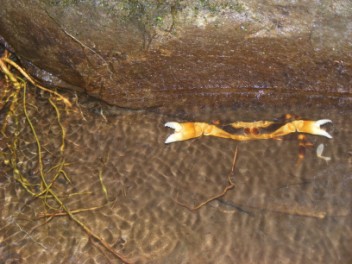
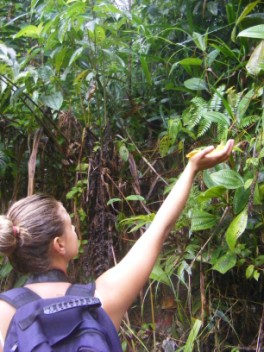
On we walked, randomly winding our way up and down paths. Dave ‘optimistically’ worked out the likelihood of our seeing a parrot was probably less than 1/1000, based on the area of habitat, the number of trees per square metre and the latest parrot census. And almost exactly after he had sealed the words of doom, we heard them, three screeching maniacs flapping madly to lose us over the canopy. Needless to say all we saw was a streak of vibrant green, but seeing a parrot in the wild was pretty incredible for all of us and for Megan (being a parrot fancier) it was almost too much to take...!
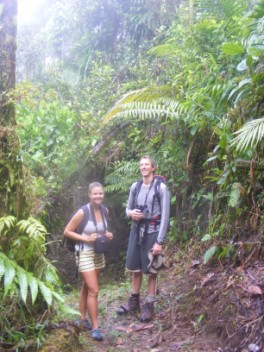
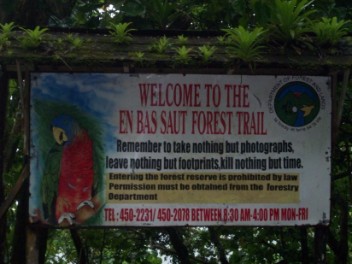
We hopped into the van of a Forestry Department ranger on our way down from the Reserve and he explained that they had just finished the most recent census and that there were over 1000 parrots left in St Lucia. Apparently a team of scientists from the RSPB and British Trust for Ornithology (BTO) had joined him and his colleagues in the survey. This had involved pairs of surveyors being stationed at viewpoints across the reserves in the early morning and late afternoon recording parrot activity for three solid weeks. He explained that the problem now was that the lack of habitat was pushing the parrots into farmland (previous forest) and that they were feeding on fruits, nuts and crops leading to renewed human-bird conflicts.
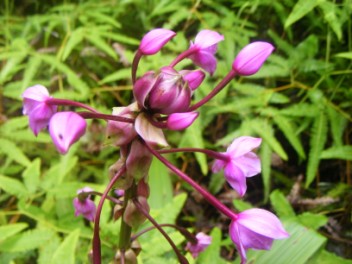
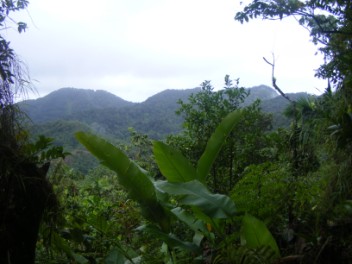
The issue of keeping parrots as pets is contentious. People adore their intelligence and loyalty. The problem is that their populations are vulnerable or endangered in the wild. Pet traders claim only to possess birds bred in captivity, but the illegal trade in birds captured from the wild continues. By keeping a pet parrot, there is a concern that it will perpetuate demand leading to greater pressure on the remaining, threatened populations.
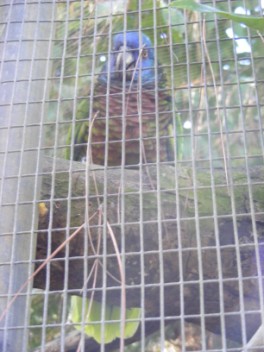
We kept a Red-tailed Hawk whilst living in Devon and took ages deciding whether it was morally fair. In our view, we were keeping a bird that was common in its native homelands of the Americas, so there was no threat to its wild status. (Falconers keeping hawks native to the UK, such as Peregrine Falcons Falco peregrines, have to be registered and are inspected by the police to ensure that no eggs or chicks are taken from the wild). Secondly, we hunted rabbits and rats with Elstone, prey that he would hunt naturally in the wild and we flew him just about every day. Thirdly, when we lost him at the beginning of the ‘manning process’ (when he was learning to associate us with food) he flew about 50m away into a tree where he sat for the next two days. His two driving forces were food and fear and the balance there of. We gained from him, watching his behaviour and habitats, as did people who saw him, he was healthy, but whether happy.....who knows?
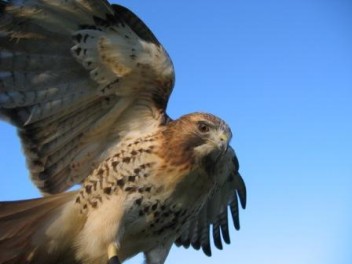
We spent some time trying to obtain a permit to undertake our seabird work. In the meantime we moored at Rodney Bay, a fairly modern, plastic marina, which nevertheless became home. Dave and I smashed off on a few runs into the ‘suburbs’ packed with mansion sized houses, guard dogs and fences to the headland which had also been divided up into housing plots in the relentless urbanisation of the island.
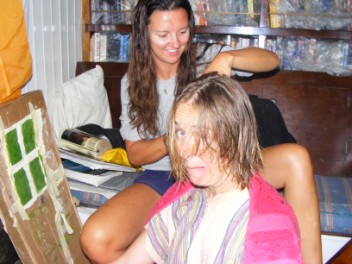
We worked with the Forestry Department and National Trust, meeting them in the beautiful forested grounds of their offices surrounded by a motley collection of animals and birds in cages. Dave, Megan and I powered up the projector and introduced the scope of the project and spoke about seabird conservation. They suggested all sorts of ideas for spreading the conservation message including creating a film, that we could use when speaking to community groups in 2010. Elevated by the meeting we trotted down the track under vast tropical trees, resplendent with climbers and set off to prepare for our surveys.
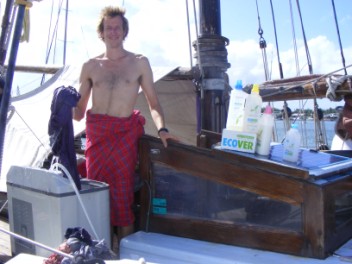
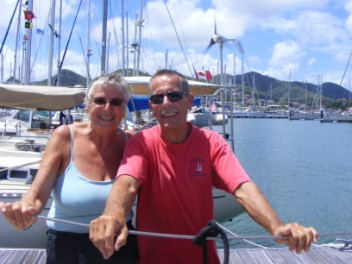
Few other events to report, save for Dave’s momentary collapse when he accidentally poured 300 litres of water into the fuel tank (so glad it wasn’t me!). My belated birthday celebrations, when Dave and I slunk off to a restaurant and unexpectedly finding Dirk and Anne again. We met the Canadian-Dutch couple first in El Jadida, Morocco amid the bustling fishing boats, found them again in the Canaries and expected that was it, until we met them in Sint Maarten (when they turned up to our seabird presentation) St Lucia and finally Grenada. They are an extraordinary couple on their second global tour, living most of their lives aboard their 45 foot boat, with the biggest hearts and the most incredible, Jeepers Jack, Holy Mackeral stories....
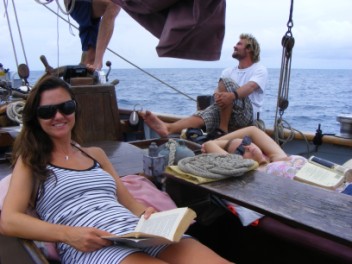
Rodney Bay was also where we left Emily, with Dave picking up the wee Irish nymph and depositing her and her cases on the pontoon in a fly-by, before we departed for the birds. She had arrived in woollen tights most unexpectedly in Sint Maarten and travelled with us for over 500 miles whipping up meals, slathering on face packs and generally infusing the boat with her Gaelic charm. Never one able to suppress emotions, lumps began to form in my throat and tears dropped to the deck.

Emily and Megan had also become best of friends, waging competitions on who might gather the greatest number of kisses. Emily won, although Megan could not have lost, being a human honey-pot with a swathe of Caribbean men following her wherever she swaggered, with Dave and I acting like a pair of crotchety parents swotting her poor drooling followers in her wake.
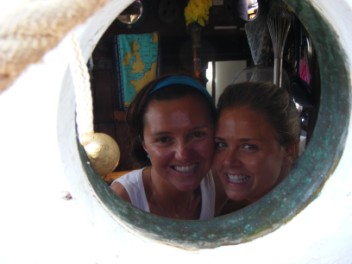
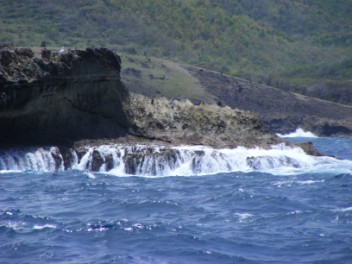
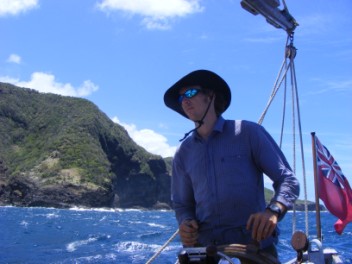
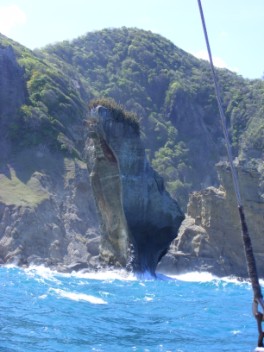
With Emily receding into the distance, we sailed north and found wave blasted islets with Brown Booby chicks and flocks of roosting Magnificent Frigatebirds all new records, new to St Lucia and the Caribbean. We sailed down the howling East Coast passing bright villages and new developments. In the distance Megan thought she noticed birds, as we grew closer, the sky looked to be writhing in movement. Sooty Terns everywhere, screeching and tumbling through the sky, fishing in the waves and descending into the cacti of Maria Island at the far south-west of St Lucia. This was our first encounter with the returning migratory masses and the sight was forbidding. The birds had just started pouring back to their summer breeding grounds and were being joined by Bridled Terns and Brown Noddies. With more birds due to arrive and the full summer count due in 2010, we counted the flocks aerially and estimated over 1500 already breeding. This was a first signal of the increased tempo and magnitude of the survey in the weeks to follow!!!
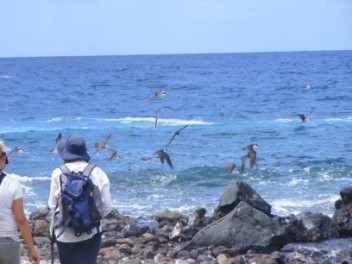
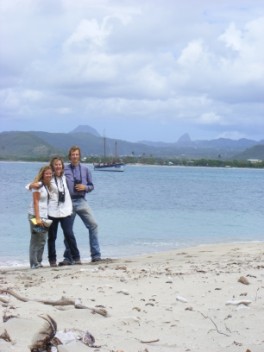
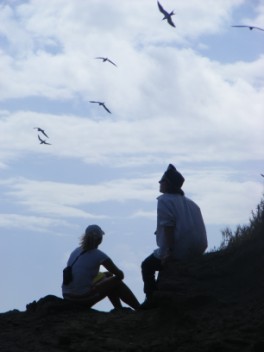
Like many of the seabird islands, Maria Island had a rich assemblage of other wildloife from brightly coloured lizards, to the ubiquitous Carib Grackles Quiscalus lugubris recorded chewing on tern eggs. The cacti had also started to bloom.
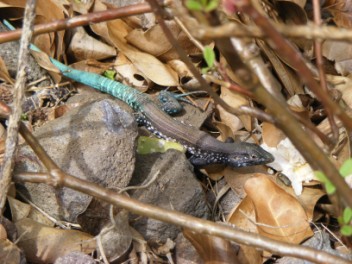
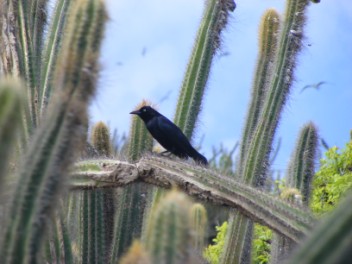
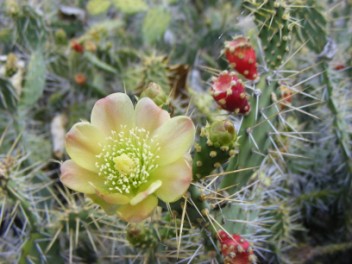
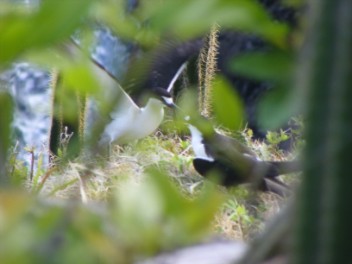
From our anchorage at Maria Island, Megan and I kayaked to Scorpion Island, a small mangrove covered islet some 2.5 miles away within a reef that prevented Lista from nosing close. There was nothing on the island apart from land-crabs peeping out of every hole and a film of rubbish. On the way home the wind smacked us on the beam of the kayaks and without a rudder we were having to paddle solely on the starboard side to stop the boat from heading straight into the wind, where she is happiest with two aboard. Of course, Land (now Lowrie) seized the opportunity on a fitness drive to power as hard as I could. On arriving back to Maria Island, I realised I couldn’t get out of the boat, nor could I get onto Lista. On closer inspection by Dave and Megan, it was found that my spine had kicked out of a place from all the one-sided straining and now had a good meander at its base.
In absolute agony, I was like a little old lady tottering around the boat. The next day I scraped my way along the street in Vieux Fort desperately seeking a doctor or lift to the hospital for an x-ray. Finally we found our way to an air-conditioned fridge of a waiting room and with Marie Clares pressed into our palms, I awaited my marching orders. A Doctor beckoned me in and within 5 minutes had diagnosed the problem, explaining that my muscles had a spasm due to the incessant, unaccustomed exercise and that I should pop some pills for the next couple of days and avoid further activity. Annoyed about the latter, but jubilant by the former I knocked back the first pills and just as he predicted was sorted within a few days.
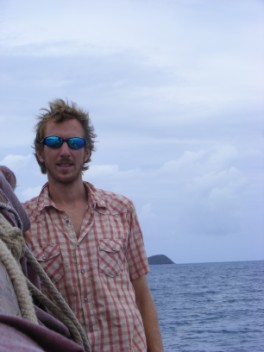
Ah, almost forgot to mention, we met some characters in Vieux Fort. First a lovely chatty guy who was filling us in on BBC world service and his culinary exploits- rice and peas, which he cooked for his family every night, occasionally with some chicken. Then there was another guy who wanted to hold Megan and my hand. This was mildy unusual, but not completely extraordinary, men generally shouted at us as we wondered the streets.....but what was unusual was his attention to Dave. As soon as he saw our rugged captain he grabbed him and looked lovingly into his eyes. Then, on a second encounter he tried to kiss the big swathy man!!! Well, I mean, you try and resist??!
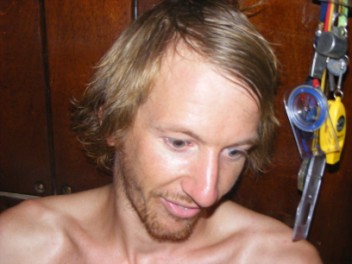
We seemed to home to Rodney Bay throughout our stay at St Lucia, becoming addicted to the cold chocolate frappes administered in a cafe by the docks where we obtained internet access. Searching for internet access became our pre-occupation throughout our surveys. We constantly needed to speak to contacts, arrange permits and meetings, send newspaper articles, add the odd diary entry and keep Natalia up-to-date with it all. Natalia is president of Environmental Protection In the Caribbean (EPIC). She realized the need for a comprehensive census of the seabirds in the Lesser Antilles in 2000. She and her husband, Adam, began surveying islands in the north of the chain near to their charity’s base in Sint Maarten, but were unable to do a complete survey of the archipelago due to the extent and the number of islands necessitating a live-aboard boat. They also had two children, Cadence and Ella, which slightly complicated the proceedings! So Natalia became my long distance mentor.
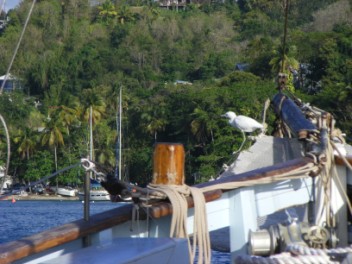
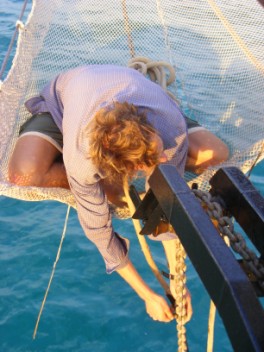
We tried anchoring in a beautiful wooded cove to the south of it, but the anchor wouldn’t stick, so back to Rodney Bay we fled. Not before jumping into the cool green water as a rain storm descended and we swam through a barrage of huge droplets ricocheting off our heads.
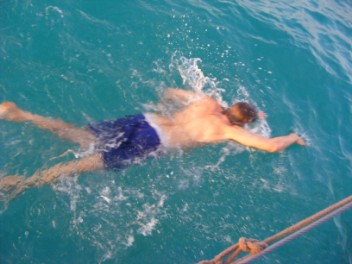
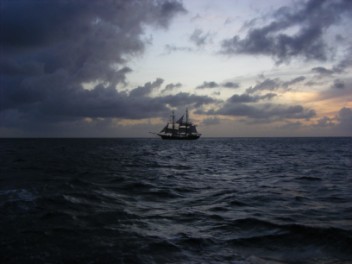
Back to previous section - Barbuda
Forward to next section - St Vincent
This page hit Count : 6369
This is the Lista Light Website, for the travels of the sailing boat Lista Light
Click here for text-version of site